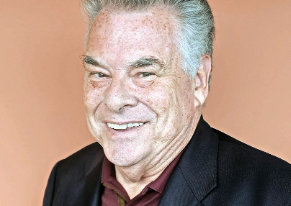My mixed memories of leading the parade
St. Patrick’s “Day” is actually several weeks of events commemorating Irish culture and traditions and Irish-America’s contributions to the American mosaic. The highlight event, of course, is the New York City St. Patrick’s Day Parade up Fifth Avenue in Manhattan, on the actual St. Patrick’s Day, March 17. But there are parades throughout the metropolitan area in the weeks leading up to and following the big day.
I can recall marching in numerous parades in communities including Bethpage, Glen Cove, Islip, Mineola, Rockaway, Rockville Centre and Wantagh. These were festive, upbeat events. What drew attention and controversy, however, was when, as Nassau County comptroller, I was elected by parade delegates to be grand marshal of the New York City parade in 1985. The centuries-old struggle between the Irish and the British, euphemistically called the Troubles, was then in the 17th year of its latest manifestation in Northern Ireland, which included shootings, bombings, mass imprisonments and hunger strikes to the death.
I had visited Northern Ireland numerous times, including a fact-finding trip to Belfast with Senator Al D’Amato in December 1980, just after his election. Then I served as a member of a tribunal in Belfast investigating abuses by the British army and observing trials of accused Irish Republican Army members in non-jury courts. From these visits, where I met with people on all sides, and from my own study and analysis, I concluded that the main cause of the violence in Northern Ireland was British oppression and denial of human rights to the Catholic community. I concluded that the only solution would be all-party talks, which would include Sinn Fein, the party representing the IRA and a majority of the Catholic population in Northern Ireland.
Not surprisingly, the British government of Margaret Thatcher denounced my election as grand marshal of the 1985 parade. So, too, did the Irish government, which announced that it would boycott the parade and not allow any Irish official to march or participate in it in any way. Both governments pressured Cardinal John O’Connor to break with tradition and refuse to greet me on the steps of St. Patrick’s Cathedral on the day of the parade. This led to a one-on-one meeting between the cardinal and me just days before the parade, following which O’Connor agreed to review the parade and recognize me as the duly elected grand marshal.
This incensed British officials, who increased the pressure on O’Connor, which only moved him to support me more strongly and make our public handshake (labeled by British media as the “handshake of shame”) the centerpiece of parade coverage. A consequence of all this controversy was death threats, which made it necessary for me to wear a bulky bulletproof vest and be escorted by Nassau County Police Department detectives and NYPD undercover officers along the 40-block parade route and then the rest of the day on the reviewing stand.
Fast-forward 13 years. By then a congressman, I had worked closely with President Bill Clinton and British and Irish officials to advance the Irish peace process, culminating in the Good Friday Agreement in April 1998, which brought peace to Ireland for the first time in almost 800 years. Sinn Fein had been a party to the talks, and was a key signatory to the agreement. Tony Blair and Bertie Ahern, the prime ministers of Great Britain and Ireland, the leaders of the countries that years earlier had condemned me as grand marshal, thanked me for my efforts!
Peter King is a former congressman, and a former chair of the House Committee on Homeland Security.






